Copyright 2012 neutronsources.org | All rights reserved. | Powered by FRM II | Imprint / Privacy Policy
On-going Projects

ACCELERATE
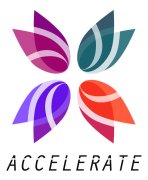
ACCELERATE is a Horizon 2020 project, supporting the long-term sustainability of large scale research infrastructures (RIs) through the development of policies and legal and administrative tools for a more effective management and operation of RIs, with a special focus on European Research Infrastructure Consortia (ERIC) and CERIC in particular.

brightnESS

BrightnESS is a European Union-funded project within the European Commission’s Horizon 2020 Research and Innovation programme designed to ensure that key challenges are met in order to build an ESS that can deliver high-impact scientific and technological knowledge. Read more.

Consortium of Italian Research Infrastructure for Cultural Heritage (CoRICH)

CoIRICH (Consortium of Italian Research Infrastructure for Cultural Heritage), is a distributed infrastructure, part of IRICH, which operates in the area of science and technology applied at the Cultural Heritage nationally and internationally, for the non destructive analysis of artistic materials of historical interest. Its tools consist of the utilisation, adaptation and expansion of state-of-the-art complementary analytical techniques, i.e. portable, facility based at synchrotrons, neutron sources, lasers, ion beams, and laboratory based in centres for objects analysis and conservation.

Collective action for nomadic small angle scatterers (canSAS)
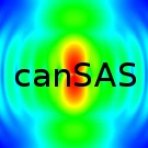
The collective action for nomadic small angle scatterers is an ongoing activity to provide the small-angle scattering user community with shared tools and information.
This work involves both users and facilities and includes:
Providing access to information about small angle scattering
Providing information about SAS facilities
Proposing and agreeing common reduced data formats
Working with reference samples to allow comparison of instruments and assessment of data reliability
The use of both neutrons and X-rays is widespread and co-operation between these facilities and the user community has been fostered by working groups that address specific fields.

CREMLIN

CREMLIN shall improve and strengthen the relations and networks between European and Russian research infrastructures both at a scientific level and at a research policy level:
- CREMLIN will enhance science cooperation between the six Russian megascience facilities and the European RI counterparts, including e-infrastructure and big data handling.
- CREMLIN will develop research policies involving all relevant stakeholders from science and policy with respect to the European Union and the Russian Federation: Within CREMLIN, specific recommendations, foresight studies, strategies and prospects for an enhanced EU-Russia cooperation will be worked out.
- CREMLIN will establish an effective exchange platform of findings and results within each respective Russian megascience project and will stimulate and ensure a process of mutual learning across the various science disciplines and European and Russian communities.

HERACLES Consortium

Addressing one of the last remaining concerns in the civil nuclear fuel cycle. Europe’s High Performance Research Reactors have teamed up in a common initiative, HERACLES, to support the world-wide non-proliferation efforts by minimizing their usage of HEU material.

International Collaboration for the Development of Neutron Detectors (ICND)

Due to its outstanding characteristics Helium-3 has been indispensable for many decades for the construction of high-efficiency detectors for neutron scattering research into condensed matter. Driven by the escalating supply shortage of Helium-3 the leading neutron facilities worldwide agreed as a matter of priority to collaborate on the ICND programme for the development of possible alternatives to Helium-3 detectors for neutron scattering applications.
Focused on the development of large area detectors the collaboration pursues three potential development lines:
- Development of large area scintillation detectors
- Gaseous detectors with solid Boron-10 converter
- Development of BF3-filled large area neutron detectors

International Collaboration on Advanced Neutron Sources (ICANS)

ICANS is an informal network of laboratories whose scientists are involved in developing pulsed neutron sources and accelerator based spallation neutron sources.
The attention of the Collaboration is on the subjects of accelerator development, source (target) and moderator development, and neutron scattering instrumentation development.
The collaboration has the following goals:
- to facilitate the exchange of technical information
- to provide for review of results and designs
- to reduce duplication of efforts
- to identify areas for collaborative efforts, and
- to provide means for informing participants about plans for activities relating to pulsed and steady spallation source development.

International Group on Research Reactors (IGORR)
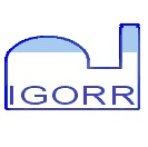
The International Group on Research Reactors (IGORR) was formed to facilitate the sharing of knowledge and experience among those institutions and individuals who are actively working to design, build and promote new research reactors or to make significant upgrades to existing facilities.

Joint Nordic Neutron Science Programme (NordForsk Neutron)

The joint Nordic programme for neutron research is being established to address the need for competence-building in this field, as identified by research funding agencies in Denmark, Norway and Sweden. Read more.

Louisiana Consortium for Neutron Scattering (LaCNS)

The Louisiana Consortium for Neutron Scattering (LaCNS) was founded in August of 2014 with the aim of building an internationally competitive neutron scattering research program in Louisiana. Through this initiative, which brings together faculty from Louisiana State University, Tulane University, University of New Orleans, and Louisiana Tech, the state of Louisiana will become and remain a leader in the exploration of advanced materials using neutrons.

New Opportunites for Better User Group Software (NOBUGS)

The term NOBUGS is a shorthand for New Opportunites for Better User Group Software. The aim of NOBUGS is to foster the collaboration between IT professionals working for X-ray, muon and neutron facilities.
The intended benefit of this collaboration is better data acquisition and analysis software which helps user to get the most out of their experiments at such expensive facilities. The activities of the NOBUGS group are supervised by an international advisory commmitee.
The activities of the NOBUGS group include but are not limited to:
- The organisation of the NOBUGS Conference
- Fostering collaboration between facilities on software projects.
- Act as a lobbying body for better scientific software

Research Infrastructures Consortium of NCPs for H2020 (RICH)

RICH 2020, the European Network of National Contact Points (NCPs) for Research Infrastructures in Horizon 2020, facilitates transnational cooperation between NCPs, promotes the effective implementation of the RI programme, supports transnational and virtual access to RIs and highlights the opportunities offered by Research Infrastructures – at the European and international level.

Small Angle Scattering (SAS) Portal
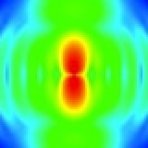
The SAS Portal is a community attempt to gather some of the most relevant information about Small Angle Scattering, X-ray (SAXS) or neutron (SANS), in one place. It has been put together by a working group of canSAS, but is constantly evolving and welcomes input.

Science and Innovation with Neutrons in Europe (SINE2020)
 SINE2020, world-class Science and Innovation with Neutrons in Europe in 2020, is a consortium of 18 partner institutions from 12 countries. It is funded by the European Union through the H2020 programme. It has two objectives:
SINE2020, world-class Science and Innovation with Neutrons in Europe in 2020, is a consortium of 18 partner institutions from 12 countries. It is funded by the European Union through the H2020 programme. It has two objectives:
- preparing Europe for the unique opportunities at the European Spallation Source (ESS) in 2020
- developing the innovation potential of neutron Large Scale Facilities (LSF’s).

Spatial Research Excellence by ESS (SREss)

Spatial Research Excellence by ESS (SREss”:https://sress.esss.se/) is a project at the European Spallation Source ERIC (ESS) funded by the European Union as part of its regional investment policy Cohesion Fund. The Cohesion Fund is the EU’s main instrument for achieving its Europe 2020 objectives.
Completed projects

Integrated Infrastructure Initiative for Neutron Scattering and Muon Spectroscopy (NMI3) (end date: 2016)

NMI3 is a consortium of 18 partner organisations from 12 European countries, including 8 facilities. NMI3 includes all major facilities in the fields of neutron scattering and muon spectroscopy, opening the way for a more concerted, and thus more efficient, use of the existing infrastructure; the ultimate aim being a more strategic approach to future developments and increased European competitiveness in this area.
The aim of the NMI3 is to facilitate the pan-European coordination of neutron scattering and muon spectroscopy research activities, by integrating all the research infrastructures in these fields within the European Research Area.

Cultural Heritage Advanced Research Infrastructures (CHARISMA) (end date: 2014)

CHARISMA is an integrating activity project carried out in the FP7 Capacities Specific Programme Research Infrastructures. The project offers an access free of costs to most advanced EU scientific instrumentations and knowledge, allowing scientists, conservators-restorers and curators to enhance their research.
The CHARISMA transnational access (TA) programs offer European scientists the possibility to carry out their experiments utilizing 3 different and complementary groups of facilities (ARCHLAB, MOLAB and FIXLAB) through a service embedded in a multidisciplinary environment involving material science and artwork conservation/restoration.
- FIXLAB provides access to large and medium scale European installations, including the beamlines of one synchrotron radiation, one neutron source and two ion-beam analytical facilities;
- MOLAB offers access to a portable set of advanced analytical equipment, for in-situ non-invasive measurements on artworks, without any movement of the artefacts from their location and any contact with the surface;
- ARCHLAB permits the access to the structured scientific information and analytical data, stored in the archives of the most prestigious European museums and conservation institutions.

Photon and Neutron Data Infrastructure (PanData) (end date: 2014)
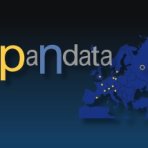
PanData brings together thirteen major world class European research infrastructures to create a fully integrated, pan-European, information infrastructure supporting the scientific process. PaNdata has recently concluded the FP7 supported project named PaNdata Europe strategic working group . PaNdata Europe, a pure support action, has developed a policy framework and laid the basic foundation for a sustainable data infrastructure, like an agreement on a data format standardization based on HDF5, design of a global authentication system or the layout of a software catalogue as a basis for generating automatic workflows. PaNdata Open Data Infrastructure (PaNdata ODI), another FP7 supported projected that started November 2011 with a kickoff-meeting, will take up these developments to create a federated open data infrastructure, seamlessly integrating the existing user and data management systems of the European photon and neutron facilities.

Cluster of Research Infrastructures for Synergies in Physics (CRISP) (end date: 2013)

CRISP is a cooperative project covering a wide variety of scientific goals together with a broad range of experimental methods and techniques. Talents in the fields of accelerators, detectors, instruments, experiments, information technology and data management are brought together. This joining of expertise overcomes fragmented approaches and uncoordinated efforts to generate added value on a European scale. Sharing research and development provides infrastructures with the opportunity to enhance performance and reduce the risks associated with individual action giving Europe the chance to compete at the global level in the fast moving economical world.

Ancient Charm (end date: 2009)
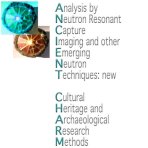
Ancient Charm is an ADVENTURE project, an action line of NEST (New and Emerging Science and Technology) is an activity in the Sixth Framework Programme (FP6) to support unconventional and visionary research with the potential to open new fields for European science and technology, as well as research on potential problems uncovered by science.

Software for Computer Aided Neutron Scattering (SCANS) (end date: 2004)

The objective of the SCANS project is software development that enables significantly more cost effective and scientifically productive use of existing neutron scattering facilities, and provide opportunities for the design of future instrumentation and the utilisation of existing and future neutron sources. SCANS aims to encourage collaboration in software development not only between the partner laboratories, but also all other neutron scattering facilities and their users.
Results:
During the first year we have carried out development of the McStas, VITESS and RESTRAX simulation packages, the NeXus data format and RMC data analysis routine s. Detailed instrument simulations are being carried out, in particular in relation to the ESS project. Most generic instrument types can be simulated though further work is required on the details of components, including samples, particularly for the description of polarised neutrons. Preliminary work has begun on the coupling of instruments/simulations to high level data analysis in order to produce ‘virtual instruments’ or automated experiment control, which depends on the scientific results obtained.

Technology for Neutron Instrumentation (TECHNI) (end date: 2004)

The aim of the TECHNI project is to assist all of the scientific users of neutron facilities throughout Europe by improving the instrumentation at these facilities. This will be done through research directed towards developing more effective technologies for neutron detection, neutron optics, and collimation. The aim of this RTD project is therefore to improve both the scientific quality of Europe’s neutron scattering instrumentation, and the volume access offered.

European Neutron Polarisation Initiative (ENPI) (end date: 2003)

Neutron scattering is well known as an important microscopic probe to study the position and movement of nuclei in condensed matter. The neutron being an elementary magnet it also interacts with magnetic fields and so sees the unpaired electrons. In that respect, the control of the incident and scattered neutron spin polarisation is a sensitive magnetic probe. In the past such polarisation analysis experiments were difficult, but important progress has recently been made offering a superb opportunity to build a new generation of advanced polarised neutron instruments. In addition to other important scientific applications there are strong indications that neutron polarimetry may contribute to the proper understanding of spin-electronics, a very contemporary issue in physics. The aim of the ENPI program is to accelerate the development of such methods so that they become a success at various neutron centres in Europe.

Perfect Crystal Neutron Optics (PECNO) (end date: 2001)
 The aim of PECNO is to make the step from geometrical optics to quantum optics where the neutron as a measuring particle should be treated as a quantum object rather than a classical particle. Perfect crystals are essential components for advanced neutron optics. The collaboration will be very important for the further development of large perfect single crystals, gradient single crystals and multiple single crystals. The project seeks to optimize the utilization of existing neutron sources and to prepare the ground for a full exploitation of more intense future sources. Developments are anticipated in the following topics:
The aim of PECNO is to make the step from geometrical optics to quantum optics where the neutron as a measuring particle should be treated as a quantum object rather than a classical particle. Perfect crystals are essential components for advanced neutron optics. The collaboration will be very important for the further development of large perfect single crystals, gradient single crystals and multiple single crystals. The project seeks to optimize the utilization of existing neutron sources and to prepare the ground for a full exploitation of more intense future sources. Developments are anticipated in the following topics:
- Perfect crystal small-angle scattering cameras
- Gradient and multiple crystals
- Neutron interferometry
- Perfect crystal storage (resonator) system
- Vibrating crystals
- Bragg focusing and wave propagation in crystals
- Quantum physics consequences
- Crystal characterization, fabrication and testing
- Phase space manipulation
- Standing neutron waves